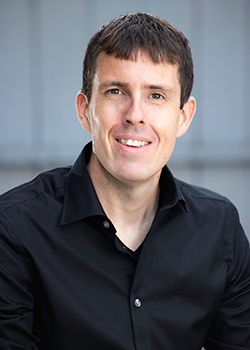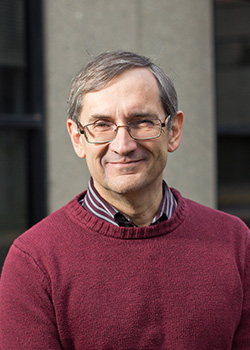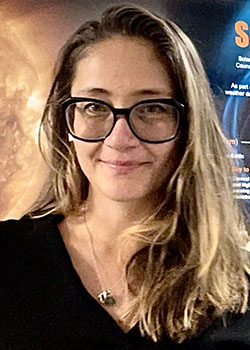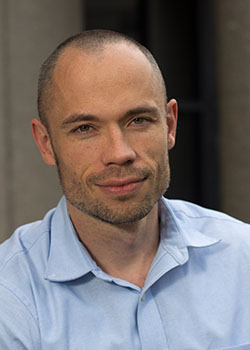About HARP
Heliophysics Audified: Resonances in Plasmas (HARP) is a NASA-funded pilot study to engage Citizen Scientists in space science research. HARP will develop a web-based interface to facilitate analysis of spacecraft data converted into sound (audification). It expands upon the MUSICS project (Magnetospheric Undulations Sonified Incorporating Citizen Scientists) led by Dr. Martin Archer, where similar work by high school students in the UK led to the discovery of a new type of plasma wave pattern, published in the journal Space Weather.
Meet the HARP Team
Dr. Michael Hartinger,
Space Science Institute/UCLA
Space Plasma Physicist, Principal Investigator for the HARP project. Mike studies Ultra Low Frequency (ULF) plasma waves and other phenomena related to how energy flows between the Sun and different regions in the near-Earth space environment.
Dr. James Harold,
Space Science Institute
Jaime has a research background in space physics, and is currently Director of the National Center for Interative Learning (NCIL) and Director Information Systems and Technology for SSI. He has a long interest in the role of computers, simulations, and games in education.
Anne Holland,
Space Science Institute
As Community Engagement Manager at NCIL, Anne manages all the library (STAR_Net) and museum (Great Balls of Fire) tours, and serves as Project Manager for many NCIL programs. Anne also leads SSI's outreach efforts, visiting schools, libraries and science centers and conducting hands-on science programs.
Dr. Robert Alexander,
Auralab Technologies
Robert is a pioneer in the field of auditory data analysis whose work has resulted in numerous discoveries and publications in the field of space physics. His Ph.D. research produced the most sensitive diagnostic of the electron temperature in the solar wind source region to date, and more recently he designed the core audification routines for NASA's CDAWeb data repository. Robert is bringing his expertise as a data sonification specialist to support all aspects of HARP's UX/UI development.
Dr. Martin Archer,
Imperial College London
Martin is a Stephen Hawking Fellow in Space Physics and Public Engagement. He studies the dynamics and waves of Earth’s space environment. He has been using sound as a tool for advancing science and public engagement, having run several projects which led to the creation of HARP.
Robert M. Candey,
NASA
Head of the NASA non-solar heliophysics archive, Space Physics Data Facility (SPDF) at Goddard Space Flight Center, and architect of various science processing systems, visualization and sonification tools, and data analysis systems.
Shane Coyle,
Virginia Tech
Research assistant, Space Science PhD candidate, and member of the The Magnetosphere-Ionosphere Science Team (MIST), Antarctic Geoscience.
Emmanuel Masongsong,
UCLA
Emmanuel is a Program Manager in the Dept. of Earth, Planetary, and Space Sciences, and study coordinator for HARP. He oversees lab research activities and education/public outreach for the NASA THEMIS-ARTEMIS and ELFIN CubeSat missions, led by Prof. Vassilis Angelopoulos. As a composer and multi-instrumentalist, seeing HARP come to fruition has been a longtime dream finally realized.
Dr. Alessandra "Ale" Pacini,
CU-CIRES / NOAA-NCEI
Research Scientist in Space Physics working on NOAA's Space Weather magnetometer team, focusing on GOES, DSCOVR and SWFO missions. She supports HARP's GUI/website tests and development.
Dr. Xueling Shi,
Virginia Tech
Research Scientist at Virginia Tech. Dr. Shi is assisting with data analysis and visualization for the HARP project. She studies ULF waves and their space weather effects using data from spacecraft and ground-based radars.
Evaldas Vidugiris,
Space Science Institute
Senior developer at SSI with 20 years of educational software development experience. Evaldas is working on the user interface for the HARP project.










